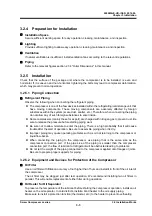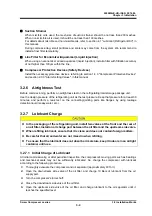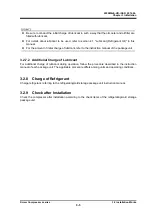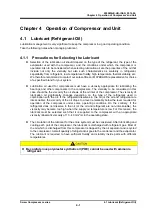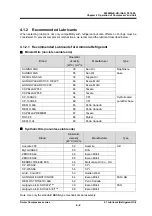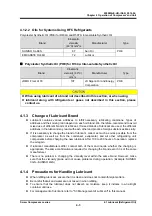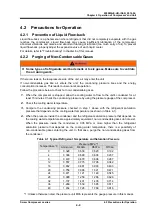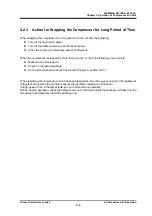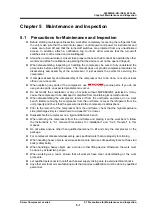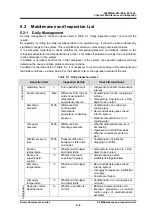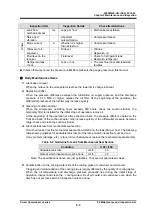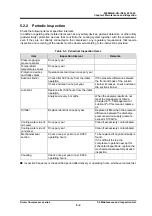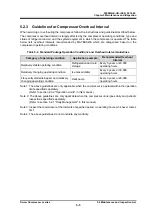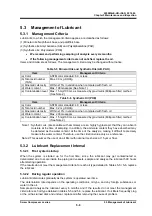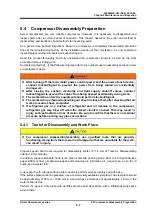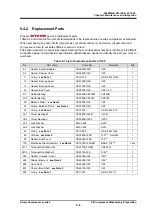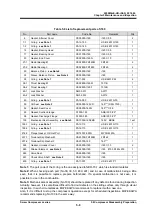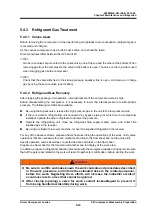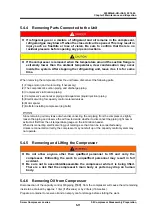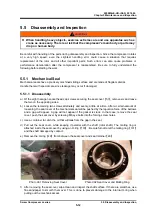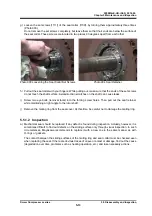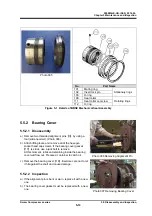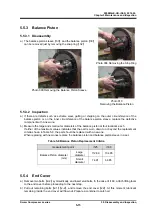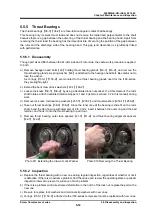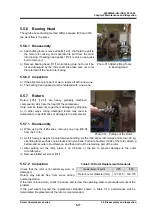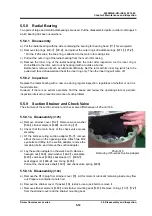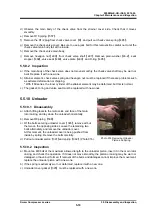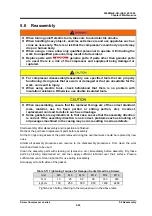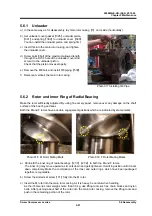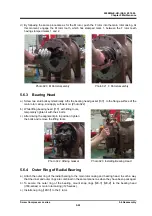
2200M4JE-HO-iS2-N_2014.04.
Chapter 5 Maintenance and Inspection
Screw Compressor i-series
5.4 Compressor Disassembly Preparation
5-7
5.4
Compressor Disassembly Preparation
Screw compressors are very reliable compressors. However, it is necessary to disassemble and
inspect parts after a certain period of operation. This chapter describes the order and method of
disassembly, and locations of and methods for inspecting parts.
As a general rule, periodic inspections where the compressor is completely disassembled should be
done at the manufacturing factory. At the installation location of the compressor, it is only possible to
inspect/replace mechanical seals and suction strainers.
Read this manual thoroughly and fully understand the compressor structure as well as the work
procedure before starting work.
Numbers denoted by
【
】
that follow part names refer to the numbers used in assembly sectional views
or development views.
After turning off the main motor power, control power and the power of each device,
conduct lockout/tagout to prevent the power from being turned on accidentally
during work.
After closing the suction, discharge and fluid supply shut-off valves, conduct
lockout/tagout to prevent the valves from being opened accidentally during work.
The worker who enters the equipment should perform lockout/tagout.
The worker who performed lockout/tagout should release them after checking that all
work procedures have completed.
If refrigerant gas or a mixture of refrigerant and oil remains in the compressor,
refrigerant gas may blow off when the closed circuit is opened. This may result in
injury such as frostbite or loss of vision. Be sure to confirm that there is no residual
pressure before opening any pipe connections.
5.4.1 Tools for Disassembly and Work Place
For compressor disassembly/assembly, use specified tools that are properly
functioning. Using tools that are worn or damaged or that are unsuitable for the work,
can result in injury.
Prepare special hand tools required for disassembly. Refer to "7.2 List of Tools for Disassembling
i-Series" in this manual.
In addition, prepare standard hand tools, green carbonite grinding stone, #80- to #100-grit abrasive
paper, #800- or finer grit abrasive paper, parts cleaning oil, lubrication oil, a squirt can, a can for oil
sump, and a waste cloth.
A work bench with a large surface plate is useful to perform work accurately and with ease.
If the surface plate cannot be prepared, use a commercially available steel plate. The steel plate should
be approximately 1000 mm × 1500 mm in size and have a thickness of approximately 1.5 mm if the
work location is flat.
Perform the work in a dry place with as little sand and dust as possible, with a sufficiently wide space
around there.

